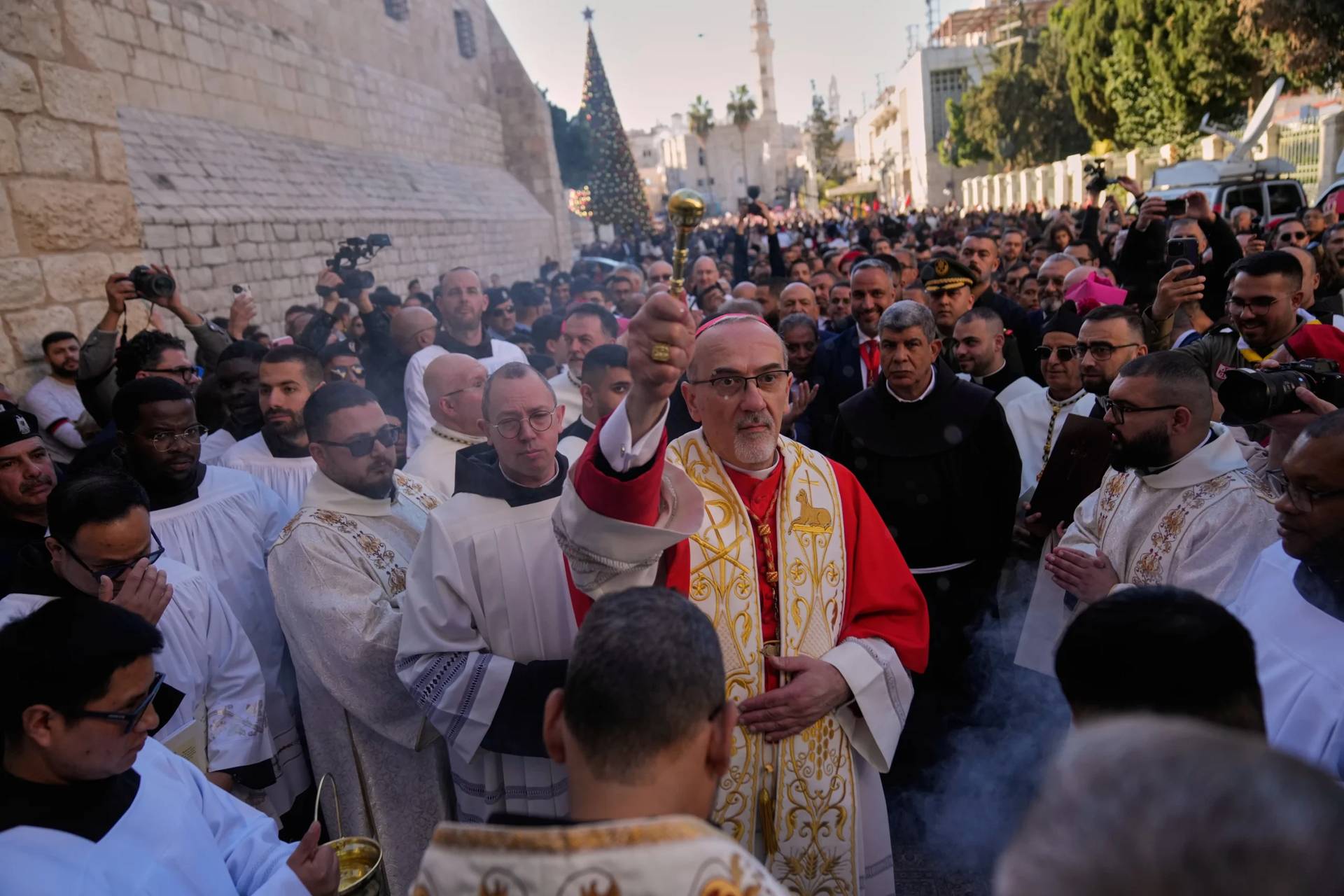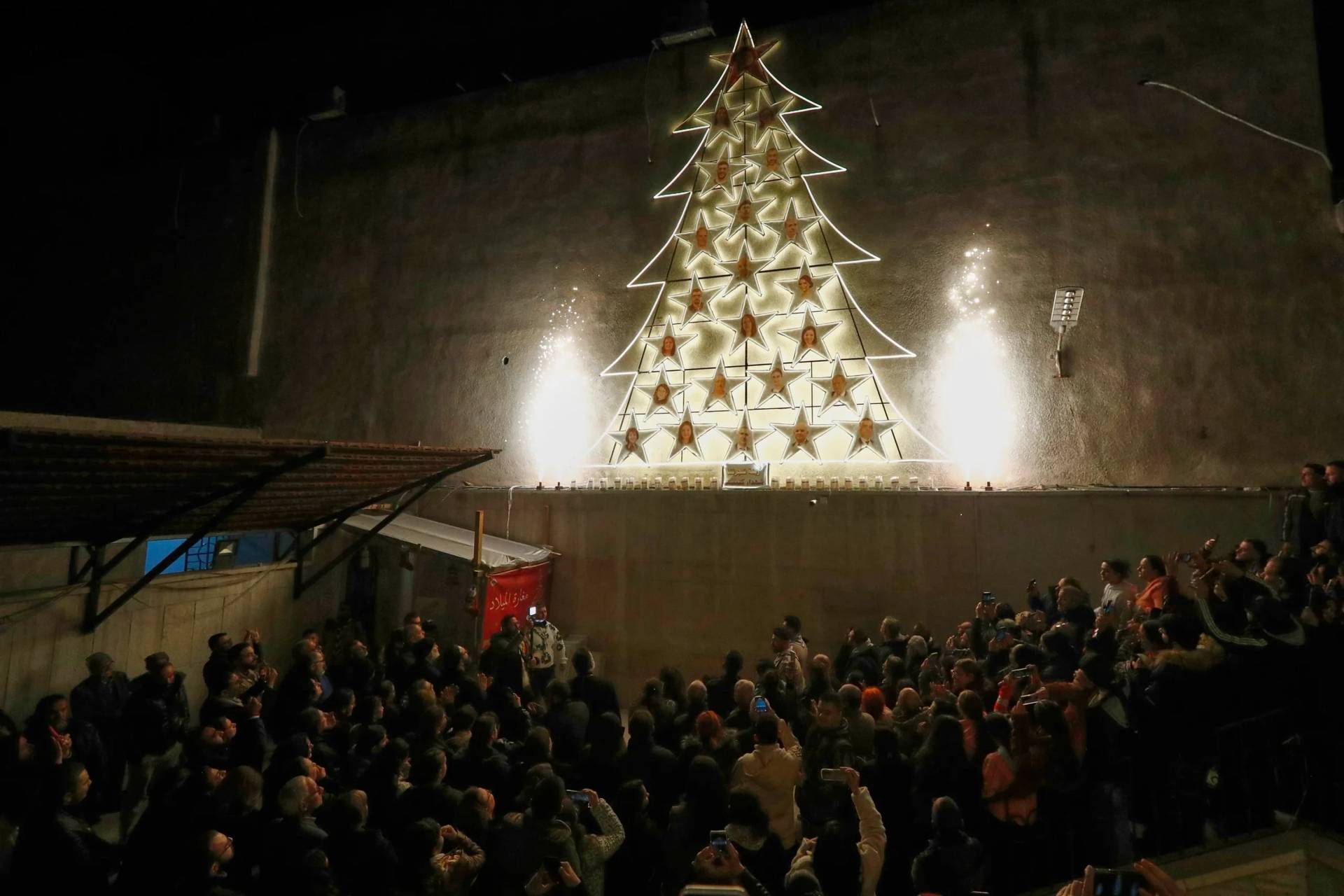SOUTH BEND, Indiana — When tasked with writing a song for the final liturgy at the National Catholic Youth Conference in 1997, Tom Tomaszek and Steve Angrisano wanted a phrase that would stir the congregation.
“If we were going to sing a song with 10,000 high school teens, what would we want them to sing?” Tomaszek recalls.
The pair decided on the words “go make a difference,” and spent 72 hours building the song, sharing ideas and lyrics with each other over the phone. The result was “Go Make a Difference,” one of the most popular songs in contemporary liturgical music – or as Angrisano jokes, “the national anthem of Catholic grade school.”
Despite the song’s national appeal, Tomaszek and Angrisano composed the piece for a specific occasion. It is this consideration of time and place, Tomaszek says, that inspires him when writing liturgical music.
“It started with the imagination of the moment,” he says.
While a particular moment or group of people helps Tomaszek write songs, he notes it is just one of three ways in which the Church asks musicians to consider liturgical music.
The United States Conference of Catholic Bishops invites all American parishes to view liturgical music with a trifold schema in its 2007 directive on sacred music, Sing to the Lord. According to the guidelines, one should evaluate liturgical music based on pastoral, liturgical, and musical judgements.
The pastoral judgement refers to the intended ‘moment’ of the piece as Tomaszek mentions, while the liturgical and musical judgements refer to how a piece suits its function in the liturgy, as well as its musical quality.
“All three judgments must be considered together, and no individual judgment can be applied in isolation from the other two,” the document states.
Angrisano says he starts composing music with the musical judgement in mind, trying to match words and a tune in an appealing way. If the song becomes too hard for a congregation to sing, he keeps working on it, but is aware that the song might not be used for liturgies.
“I’d rather let the art take me outside of the box before I try to put this inside of a box,” he says.
Neither Angrisano nor Tomaszek has an exact pattern when they write music, but they both credit an awareness of beauty for offering them the spark of inspiration.
“Sometimes you’ll just be struck by a text, and you’ll have a phrase that needs to be spoken,” Tomaszek says.
When writing a tune for that text, though, the pastoral judgement helps inform the genre of the piece.
“You’re trying to write music that people can sing and pray with you, and they can’t pray if they’re thinking too hard,” Angrisano explains. “The best songs are songs that even when you’re halfway through it, you feel like you’ve heard it before.”
Both Angrisano and Tomaszek write liturgical music in a contemporary style, and say they want people to understand what they are singing to have a more prayerful experience.
Liturgy should “explore the musical norms and sensitivities of all the generations, especially as the young generations emerge with musical styles that are particular to them,” Tomaszek says.
Tomaszek claims that “the Western ear” now expects to hear certain types of melodies in music. While something like Gregorian chant is part of the “treasury” of church music, he says, older styles of music do not affect a congregation as normative.
Still, Angrisano believes that contemporary liturgical music composers can sometimes be misunderstood.
Of the contemporary liturgical musicians he knows, “all of them are considerably more diverse liturgically, as music leaders, than just the music that they wrote,” he says. “Just because I wrote ‘Go Make a Difference’ doesn’t mean I would never sing a chant at Communion.”
Tomaszek agrees with the spirit of diversity, noting the parish he works at enjoys singing chant-like Mass settings every Advent.
“It’s not like it can be one thing or the other,” he says.
To achieve this variation of styles, Angrisano says it’s important to have diversity within each liturgy.
“A little bit of diversity in every liturgy is better than ‘this is our traditional choir, they only sing traditional music; this is our contemporary choir, they only sing contemporary music,’” he says.
Still, a traditional choir shouldn’t have to sing a full Mass of contemporary music, nor the other way around, he adds.
“It reminds us that we’re Catholic, which is universal,” Angrisano says, who has performed at seven World Youth Days.
At the heart of all liturgical music, is the effort to create music that resonates with people in a spiritual way.
“That is our duty as liturgical musicians, not just do this competently,” Angrisano says, “but to get to a level where it leads us to prayer.”
Crux is dedicated to smart, wired and independent reporting on the Vatican and worldwide Catholic Church. That kind of reporting doesn’t come cheap, and we need your support. You can help Crux by giving a small amount monthly, or with a onetime gift. Please remember, Crux is a for-profit organization, so contributions are not tax-deductible.

















